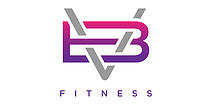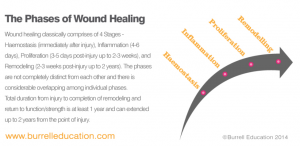I sometimes describe pregnancy exercise to clients as training for their Olympic event. Because that’s kind of what it is- a life changing event where huge physiological changes occur in a woman’s body.
So we prepare for it. My clients stay as mobile, fit and strong as they can. We work on opening the pelvis for labour, on keeping the pelvic floor strong but not tight- we need it to relax and stretch for baby, and on making sure mum is in the best position she can be to recover afterwards.
But as with any sporting event, injuries occur.
And who do you see when you get an injury? Back pain, tennis elbow, knee pain? A physio, right? Or at least I hope you do- masking the symptoms with painkillers won’t do much good long term!
And the particular physio you need in this case is called a Women’s Health Physio. Some women will see one in hospital, for example after a bad perineal tear. But most of us don’t. We should, but we don’t.
Giving birth is probably the only physical trauma that we don’t get help for!
It can be major surgery to abdominal wall that interferes with the core and whole body function, a cut or tear to perineum; it’s pushing a baby through your vagina!
How many times have you heard women complain “I’ve had pain around my pelvis/ incontinence since giving birth…” YEARS later?
Because there are ‘injuries’ from giving birth that we simply don’t recognise as such. Incontinence for example. Common but NOT normal, we treat the symptoms with pads, instead of the cause.
And the best way to determine the cause is to see a WH Physio, because it isn’t necessarily a weak pelvic floor.
The pelvic floor could be too tight, not used in the correct way or have other muscles compensating for it.
Emma Tailby, Women’s Health Physio at Ashlyns Physiotherapy in Berkhamsted says “We use an holistic approach in treating pelvic floor disorders.
“From treating incontinence to prolapse, pelvic pain or constipation, there is growing evidence that WH physiotherapy can alleviate, and in many cases cure these symptoms. Most women don’t know that help is available and it can be an embarrassing topic.
By doing correct pelvic floor muscle exercises 7 in 10 women avoid surgical intervention. You need this strong core foundation to start to rebuild your postnatal body.”
So what exactly does pelvic floor physio involve?
The initial assessment will include plenty of questions about your delivery, how your muscles feel, have you had any incontinence, your bladder and bowel health, diet, posture. You’ll be checked for abdominal separation and how well your deep core muscles are functioning, and there’s a thorough internal assessment.
This internal examination is explained and consented to. “Every woman’s body and post birth recovery is different so it is key to examine you to ensure the strength and function of your pelvic floor as an individual,” Emma explains.
However for anyone uncomfortable with this an external assessment can be done too.
“Can’t I just do my kegels?”
You can, and I work through kegel progressions with clients and on Restore My Core, with the aim of integrating the pelvic floor in to whole body movements, working it as part of a global system rather than in isolation.
BUT- you need to start in isolation. And you need to get it right. And I can’t know for sure if you are or not. As one client told me, “it wasn’t until the physio had her fingers up there that I really got the full lift through my pelvic floor!”
Becky Aston from Becky Aston Physiotherapy in Chesham says “Only 50% of women will do their pelvic floor exercises correctly when taught without an examination (or with verbal instruction). Some will have pelvic floor muscles that need help to contract and a WH Physio will be able to help with that. Some women have restrictions from scars even ones that are years old and without these released activating the pelvic floor muscles is difficult.”
You’ll be asked to perform a variety of contractions as your pelvic floor is thoroughly assessed. Full contraction, part contraction, a long squeeze, a series of shorter ones. Squeeze and hold then try and squeeze more. That kind of thing.
And you’ll get given exercises specific to you.
Let’s face it, you’re out of hospital as quickly as they can manage, and the 6 week postnatal check leaves a bit to be desired. If you’re lucky you’re told to do your pelvic floor exercises and pretend you’re stopping the flow of urine.
However Erica Lewis from Hertfordshire Women’s Health tells me this is far from ideal:
“Every woman has different needs and desires regarding what they want to achieve from their treatment and this, along with findings from the examination, determines what is appropriate and what should be avoided.
“Variations in pelvic floor exercises include the number of repetitions, effort of contraction, length of hold and exercise position, and for some women we have to focus on releasing and relaxing the pelvic floor before we even begin exercising it.”
I wish every client would see a Women’s Health Physio before coming to me.
This way I KNOW you’ve connected to your pelvic floor. I know, from the physio, EXACTLY where you are strength-wise. I know how well you’re connecting with your deep core muscles. I coach through this, but a personal trainer will not be able to do this as effectively as a WH Physio if you’re having problems here.
And then I can focus on what I’m there for: exercise programming.
(Although I like to be clear- exercises are the last piece of the puzzle when it comes to restoring your core after baby! Correct breathing technique, alignment, releasing tight spots and nutrition are all essential to the postnatal journey. Without getting all this right the best exercises in the world won’t make a difference.)
“But I feel fine!”
That’s great! I still think it’s worth having a postnatal check-up though. I want to KNOW everything’s ok, and even if you don’t have signs of incontinence, bulging at your stomach or pelvic floor/ low back pain/ pelvic pain, sometimes the problems don’t happen straight away.
Pelvic floor exercises and correct abdominal recruitment is not easy, and Becky Aston says “many women come and see me saying that they have been doing kegels for years and yet they still have a problem. On examination they are holding their breath or bearing down or recruiting every other muscle other than their pelvic floor muscles- how great would it be to get it working correctly before problems arise?”
When we start the menopause, the hormonal changes mean that connective tissue begins to lose elasticity. So if there is a weakness somewhere in your core or pelvic floor, this is when it will show itself. And it’s thought over 50% of women suffer a prolapse at some point.
Pelvic Organ Prolapse (POP) is when one or more of the pelvic organs (bladder, uterus, rectum) prolapses into the vagina.
There are varying degrees of this, and it can be managed, but in some cases it will require surgery. And in every case it is upsetting for the woman experiencing it.
You can get false teeth if you don’t care for them properly, but you can’t replace your pelvic floor, and that’s what’s holding your pelvic organs in place. It really is one of those things you don’t appreciate until something goes wrong.
And whilst the menopause is a high risk time for POP, it happens to plenty of young women too. Some exercises put more pressure on your pelvic floor than others, so if you’re thinking of going to bootcamp then you 100% need to see a WH Physio and find out if your pelvic floor can cope with it.
Even if you’re years postnatal, it’s never too late- book an appointment with your local WH Physio.
And if you know a new mum and are wondering what you can get her, instead of baby gifts how about a Mummy MOT? Along with cleaning, cooking, and help looking after siblings, I think that should be up there on the list of best things you can do for a new mum.
For more advice download my 10 Tips for getting back in shape after having a baby, and head to this closed pregnancy and postnatal support group, where I can be found to answer any pregnancy and postnatal related exercise questions, along with a whole team of experts, invluding 3 Women’s Health Physios!




